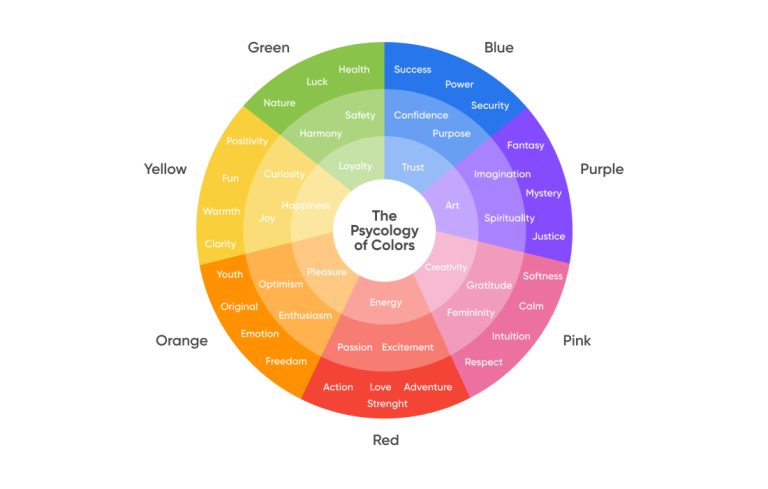Color plays a vital role in how humans perceive the world, influencing everything from branding and marketing to personal fashion and interior design. While color preferences may seem like stable personal choices, they are often shaped, and even altered, by our emotional states. The connection between emotion and color selection is deeply rooted in psychology and neuroscience, revealing how moods and feelings can shape our decisions, sometimes without conscious awareness.
The Psychological Connection Between Emotion and Color
Our emotional state affects the way we perceive and interact with color. Emotions are closely tied to sensory experiences, and color is a powerful visual cue that can trigger specific feelings. Likewise, our current mood can influence which colors we are drawn to or repelled by at any given moment.
For instance, when people feel happy or energetic, they often gravitate toward bright, vivid colors such as yellow, orange, or red. These hues are associated with warmth, enthusiasm, and vitality. On the other hand, when individuals are experiencing sadness or stress, they may prefer cooler or darker tones like blue, gray, or black, which reflect introspection or a desire for calm.
Psychological studies have shown that individuals in different emotional states consistently choose different colors in tasks ranging from product design to clothing selection. This illustrates that color preferences are not just habitual or cultural—they are dynamic and responsive to how we feel.
Color as an Emotional Expression
One of the most powerful ways emotions influence color choice is through self-expression. People often use color to communicate their internal state to others, whether consciously or subconsciously. Wearing bright colors might be a signal of confidence or joy, while opting for darker shades could reflect a need for protection or anonymity.
Artists and designers frequently use color to express emotion in their work. A painter experiencing grief may lean into muted palettes, while one who feels joy might use bold and contrasting hues. Similarly, individuals decorating a personal space often select colors that reflect their emotional needs—seeking comfort, stimulation, or peace.
This link between emotion and color selection has even been leveraged in therapeutic settings. Art therapy and color therapy use these associations to help individuals process emotions and gain insights into their mental well-being.
Neurological Factors Behind Emotional Color Choices
Scientific research into brain function has revealed the neurological basis for how emotions affect color perception and choice. The brain processes emotional and visual information in overlapping regions, particularly within the limbic system. When a person is in a heightened emotional state, this overlap can intensify their sensitivity to certain colors or alter their preferences.
For example, stress and anxiety activate the amygdala, a brain region involved in emotional processing. This activation can influence how we perceive brightness and saturation, sometimes making environments feel overwhelming or dull depending on the emotion involved. This response explains why someone who is anxious might find bright colors overstimulating and prefer more subdued tones.
Hormonal changes also play a role. Shifts in hormones like serotonin and dopamine, which are closely linked to mood, can subtly alter color perception and preference. A person with elevated serotonin levels may feel drawn to colors associated with happiness and energy, whereas lower levels may result in preferences for more somber shades.
Cultural and Personal Contexts
Although emotional states have a universal impact on color selection, the interpretation of colors is also influenced by culture and personal experience. Red may represent love and passion in some societies, but in others, it may signify danger or mourning. Similarly, a person may associate a particular color with a personal memory, shaping their emotional response to it.
When emotional states interact with these personal and cultural associations, the results can be complex. Someone might avoid a cheerful color not because they’re in a bad mood, but because it reminds them of a painful event. Conversely, a sad person might choose an upbeat color to counterbalance their mood or project positivity.
Understanding the interaction between emotion and color requires considering both the inner emotional landscape and the broader cultural backdrop that gives color meaning.
Practical Implications in Everyday Life
The way emotional states influence color decisions has important implications in areas like marketing, user interface design, fashion, and mental health care. Marketers can tailor advertisements based on the emotional tone they want to evoke. Designers can create environments that support desired emotional outcomes—calm in hospitals, excitement in retail, or focus in schools.
On an individual level, becoming aware of how your mood influences your color choices can lead to more intentional decisions. If you notice that you always choose dark colors when feeling down, you might experiment with lighter hues to shift your mindset. Conversely, if you use bright colors to mask emotions, understanding this pattern can offer insight into your emotional coping strategies.
Conclusion
Emotional states have a profound and often subtle impact on color selection decisions at daman game. Whether through direct mood expression, subconscious signaling, or cultural associations, our feelings guide the colors we choose to wear, display, and create. By recognizing this link, we not only become more aware of our emotional landscapes but also learn to use color as a tool for reflection, communication, and emotional balance.

